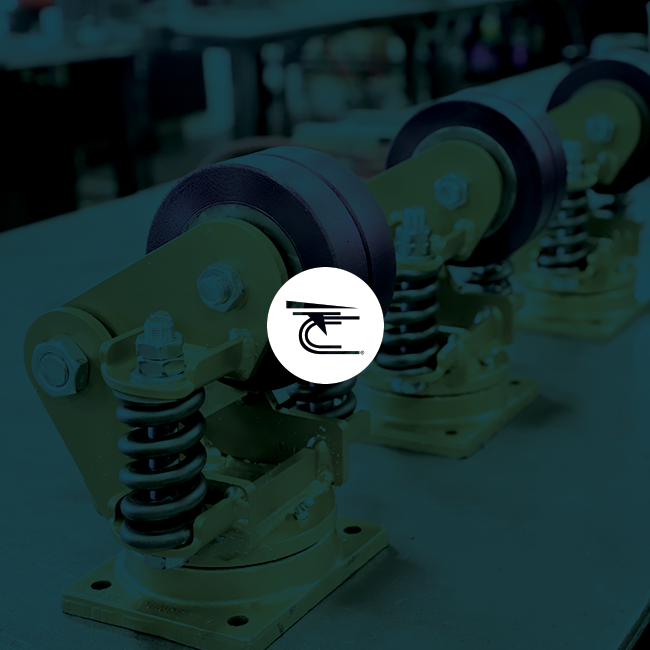

The Finite Element Method (FEM) is a numerical method that is used by engineers to solve problems in engineering. For example, if you take a stick and bend it, it will break. FEM can predict this all while keeping you free of splinters, because this type of testing means you don’t have to actually go through the process of breaking the stick.
A practical application of this analysis is called Finite Element Analysis (FEA), where a computer model predicts the physical behaviors of how a product will react to heat, stress, vibration, and other factors. By utilizing Finite Element Analysis Software, Caster Concepts can virtually create and design casters, and simulate a variety of dynamic real-world situations that the caster may be exposed to. This helps to identify any points of weakness in the design and gives the engineer the ability to correct these situations before the caster is manufactured.
And because this analysis is ideal for showing whether a product will break, wear out, or work the way it was intended, it reduces the number of physical prototypes that must be built. This reduction in physical models saves time, money, and reduces lead time. These engineering abilities also help Caster Concepts create higher capacity casters without increasing their overall size through redesign and utilization of alternative materials.
Not all challenges require the engineering power of Finite Element Analysis to understand the reasons for failure, and that is where the Caster Urethane Tire Failure Predication Calculator comes in. The Urethane Tire Failure Prediction tool was developed over ten years ago and has been validated by physical dynamometer testing at Caster Concepts. The research has been published in Rubber and Plastics News and won a best technical presentation award at the 2007 Polyurethane Manufacturers’ Association meeting.
With the Caster Urethane Tire Failure Predication Calculator, you simply send in some basic information about the casters you are currently using and receive results that predict the likelihood of failure along with some recommendations. This information includes:
Giving this information to a Caster Concept engineer will help you can learn numerous things about your casters. Results include predictions about steady state temperature, tire deflection, tire footprint, and even predictions about the stress the wheel exerts on your floor. Once you have these results, it will be easier to determine any potential problems you may be experiencing with your casters and determine which casters are the best for your specific application.